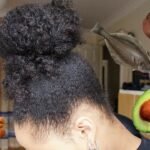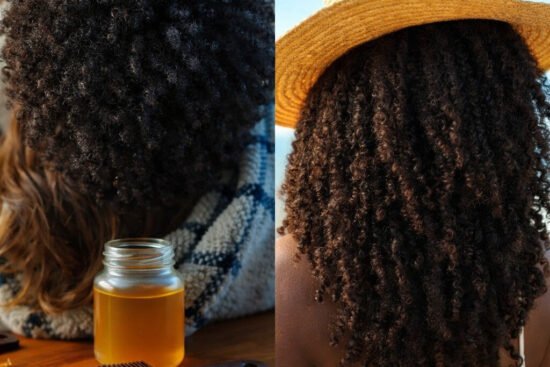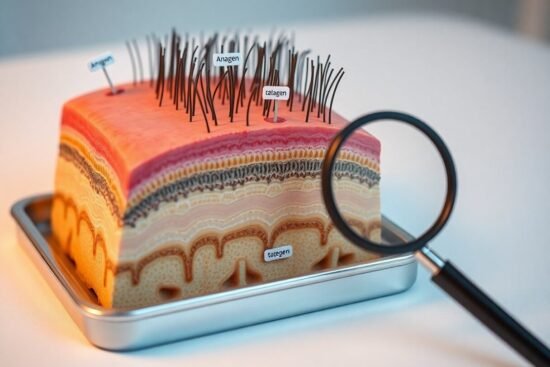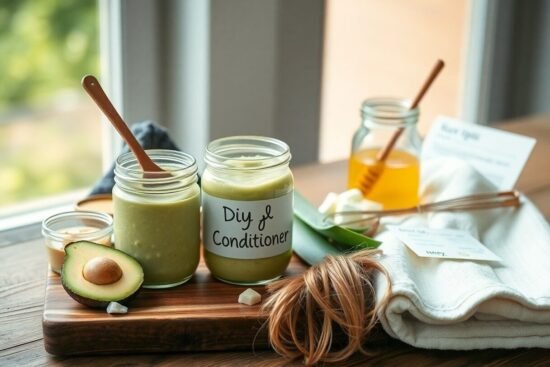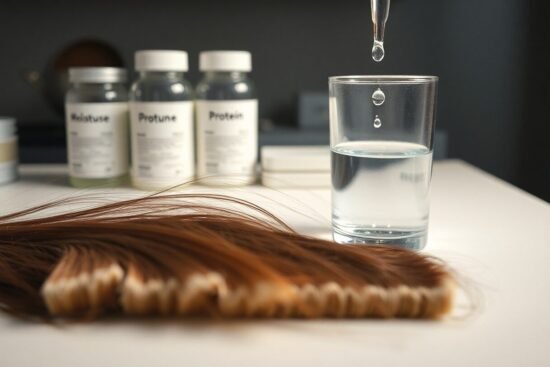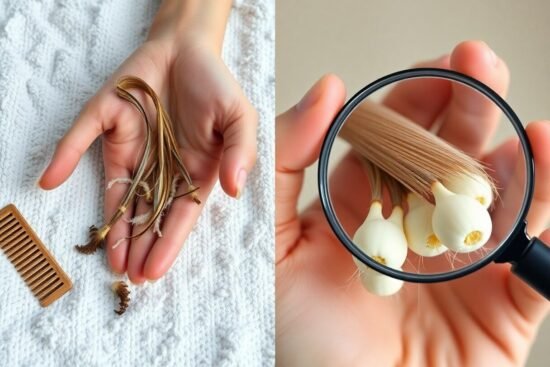
Are you an African American teenager with natural hair and wondering how to grow your hair? Well, you’ve come to the right place! In this article, we’ll explore the recommended method for washing natural hair at home specifically designed for black women. Taking care of your hair and promoting its growth can be a challenging task, but with the right techniques and products, you’ll be well on your way to achieving healthy and luscious locks. So, let’s dive into the world of natural hair care and discover the secrets to nurturing your beautiful mane!
Understanding Your Hair Type
Knowing the different hair types
Understanding your hair type is essential for properly caring for your natural hair. There are generally four hair types: straight, wavy, curly, and coily. Each hair type has its own unique characteristics and requires specific care. Straight hair is typically smooth and lacks significant curl or wave. Wavy hair has a slight “S” shape and tends to be more prone to frizz. Curly hair forms spirals or coils and has more volume. Coily hair, also known as kinky hair, has tight curls or coils and can range from fine to coarse.
Understanding your hair’s porosity
Hair porosity refers to how well your hair absorbs and retains moisture. It is categorized into three types: low porosity, normal porosity, and high porosity. Low porosity hair has a tight cuticle layer, making it resistant to moisture. Normal porosity hair easily absorbs and retains moisture. High porosity hair has a damaged cuticle layer, causing it to absorb moisture quickly but lose it just as fast. Understanding your hair’s porosity can help you choose the appropriate hair care products and methods for optimal hydration.
Recognizing your hair’s density
Hair density refers to the number of hair strands on your scalp. It can be categorized as low density, medium density, or high density. Low density means you have fewer hair strands, whereas high density indicates a larger number of hair strands. Recognizing your hair’s density will help you understand how much product to use and how to achieve desired hairstyles. It’s important to note that hair density is different from hair thickness, which refers to the thickness of each individual strand.
Proper Hair Washing Techniques
Choosing the right shampoo for natural hair
Selecting the right shampoo for your natural hair is crucial to maintain its health and appearance. Look for shampoos specifically formulated for natural hair, which are usually sulfate-free and gentle. Avoid shampoos that contain harsh ingredients that can strip your hair of its natural oils. Instead, opt for moisturizing and nourishing shampoos that promote hydration and maintain the hair’s natural moisture balance.
Mastering the right technique of washing your hair
When washing your natural hair, it’s essential to follow the proper technique to minimize damage and maintain its health. Start by wetting your hair thoroughly with warm water. Apply a small amount of shampoo to your scalp and gently massage it in using your fingertips, focusing on the roots. Rinse the shampoo out thoroughly, making sure there are no residue or buildup. Follow up with a conditioner, applying it from mid-length to the ends and leaving it on for a few minutes before rinsing.
How often should you wash your natural hair?
The frequency of washing your natural hair depends on several factors, such as your hair type, porosity, and lifestyle. Generally, it is recommended to wash your natural hair once or twice a week. However, this may vary depending on personal preference and the need to remove buildup or excess oil. Pay attention to how your hair feels and adjust your washing routine accordingly. Remember, overwashing can strip your hair of its natural oils, leading to dryness, while underwashing can cause product buildup and scalp issues.
Hydrating Your Hair
Importance of hydration for natural hair
Hydration is essential for maintaining healthy and vibrant natural hair. Properly hydrated hair is more manageable, less prone to breakage, and has improved elasticity. Hydration also helps to retain length, enhance curl pattern, and promote overall hair growth. Moisturized hair has a better ability to withstand external factors such as heat styling, harsh weather, and environmental pollutants.
Choosing the right hydrating products
Selecting the appropriate hydrating products for your natural hair is crucial to lock in moisture and prevent dryness. Look for products that are specifically formulated for natural hair, such as leave-in conditioners, moisturizers, and hydrating oils. Ingredients like shea butter, coconut oil, and aloe vera are known for their hydrating properties. Experiment with different products to find what works best for your hair type and porosity level.
DIY methods for hydrating your hair
If you prefer natural and DIY approaches to hair care, there are various methods to hydrate your hair at home. Deep conditioning treatments using ingredients like avocado, honey, and olive oil can provide intense moisture to your hair. You can also create your own hydrating spritz by mixing water, aloe vera juice, and a few drops of essential oils. Additionally, incorporating steam treatments into your routine can help open up the hair cuticles, allowing for better product penetration and hydration.
Deep Conditioning Your Hair
Benefits of deep conditioning
Deep conditioning is a crucial step in maintaining the health and vitality of natural hair. It provides intense moisture, improves elasticity, softens the hair, and enhances its overall manageability. Deep conditioning treatments also help to repair damage, reduce frizz, and promote hair growth. Regular deep conditioning sessions can significantly improve the health and appearance of your natural hair, especially if done consistently.
How to properly deep condition your hair
To properly deep condition your hair, start by choosing a deep conditioner that suits your hair’s needs. Apply the deep conditioner to freshly washed hair, focusing on the mid-length to the ends. Gently massage the product into your hair, making sure to distribute it evenly. Cover your hair with a shower cap or plastic wrap and leave the deep conditioner on for the recommended time. Rinse thoroughly with cool water to seal in moisture. For added benefits, you can use heat by covering your hair with a warm towel or using a hair steamer.
Recommended deep conditioners for natural hair
There are numerous deep conditioning products available for natural hair, making it important to find the ones that work best for your hair’s specific needs. Look for deep conditioners that are rich in moisturizing ingredients like shea butter, coconut oil, and glycerin. Some popular deep conditioners for natural hair include SheaMoisture Jamaican Black Castor Oil Strengthen & Restore Treatment Masque, Mielle Organics Babassu Oil & Mint Deep Conditioner, and Carol’s Daughter Almond Milk Ultra-Nourishing Hair Mask. Experimenting with different products will help you discover the best deep conditioner for your natural hair.
Properly Detangling Your Hair
The importance of detangling your hair
Detangling is an essential step in caring for natural hair as it helps to prevent breakage, reduce tangling, and promote overall hair health. Detangling removes knots, tangles, and shed hair, making it easier to manage and style your natural hair. Proper detangling techniques are crucial to avoid damaging your hair and to retain length.
How to safely detangle your hair without breakage
When detangling your natural hair, it’s important to approach it with care to prevent breakage and damage. Start by sectioning your hair into smaller sections, making it more manageable. Use a wide-toothed comb or a detangling brush specifically designed for natural hair to gently detangle from the ends, working your way up towards the roots. Apply a detangling spray or leave-in conditioner to provide slip and make the detangling process smoother. Avoid aggressive combing or brushing, especially when your hair is dry, as it can cause breakage.
Finding a detangle product suitable for your hair
Finding the right detangling product for your natural hair is crucial to make the detangling process more effective and less damaging. Look for leave-in conditioners or detangling sprays that provide slip and make it easier to glide the comb or brush through your hair. Ingredients like aloe vera, slippery elm, and marshmallow root extract are known for their detangling properties. Experiment with different products to find what works best for your specific hair type, texture, and needs.
Practicing a Healthy Lifestyle
Healthy diet for hair growth
Maintaining a healthy diet is essential for promoting hair growth and overall hair health. Incorporate nutrient-rich foods into your diet, including fruits, vegetables, whole grains, lean proteins, and healthy fats. Foods rich in vitamins such as A, C, D, and E, as well as minerals like zinc and iron, can contribute to healthy hair growth. Additionally, staying hydrated by drinking plenty of water is important for your hair’s moisture balance.
Exercise and hair growth
Regular exercise not only benefits your overall health but can also contribute to improved hair growth. Exercise increases blood flow to the scalp, promoting the delivery of essential nutrients and oxygen to the hair follicles. It also helps to reduce stress, which can have a negative impact on hair growth. Engage in activities like jogging, yoga, or even simple scalp massages to boost circulation and support healthy hair growth.
How stress affects your hair growth
Stress can have a significant impact on hair growth and overall hair health. Increased stress levels can lead to excessive shedding, slower hair growth, and even hair loss. Finding healthy ways to manage stress, such as through relaxation techniques, exercise, or engaging in hobbies, is crucial for maintaining healthy hair. Taking care of your mental and emotional well-being can positively impact your hair’s growth and appearance.
Sealing in Moisture
Understanding the role of sealing moisture in hair growth
Sealing moisture is a critical step in maintaining the hydration of your natural hair, which is essential for promoting hair growth. Sealing refers to using products to create a barrier that locks in moisture and prevents evaporation. By sealing in moisture, you help your hair retain hydration for longer periods, reducing dryness, breakage, and damage. Properly sealed hair tends to have improved health and elasticity, allowing it to grow and thrive.
How to seal moisture into your hair
To effectively seal moisture into your natural hair, follow these steps after applying your leave-in conditioner or moisturizer. Start by selecting a sealing product such as natural oils, butters, or creams. Apply a small amount to your hair, focusing on the ends and areas prone to dryness. Use the “praying hands” method or gently scrunch the product into your hair to ensure even distribution. Finish by sealing in the product with a light oil or butter, such as jojoba oil or shea butter.
Choosing products for sealing in moisture
Selecting the right products for sealing moisture depends on your hair’s porosity, texture, and personal preference. For low porosity hair, lightweight oils like grapeseed or argan oil are suitable for sealing. Medium to high porosity hair may benefit from heavier oils like castor oil or coconut oil. Additionally, shea butter or mango butter can also provide a sealing effect. Experimenting with different products will help you determine what works best for your hair’s needs.
Using Protective Styles
What are protective styles?
Protective styles are hairstyles that minimize manipulation, provide low maintenance, and protect your hair from environmental factors. These hairstyles typically involve low tension and protect the ends of your hair, reducing breakage and promoting hair growth. Some popular protective styles for natural hair include braids, twists, updos, wigs, or weaves. Protective styles allow your hair to rest and recover, preventing damage and promoting overall hair health.
Benefits of using protective styles for hair growth
Using protective styles can have numerous benefits for natural hair growth. By reducing manipulation, protective styles help to retain length and minimize breakage. They also protect your ends from rubbing against clothing or other surfaces, reducing split ends and hair damage. Additionally, protective styles provide a break from heat styling, excessive brushing, and other stressors that can inhibit hair growth. When done correctly and with proper care, protective styles can contribute to healthier and longer natural hair.
Examples of protective styles for natural hair
There are various protective styles suitable for natural hair, offering versatility and creativity while keeping your hair safe. Box braids, Senegalese twists, cornrows, and faux locs are popular protective styles that provide long-lasting protection and allow for low manipulation. Updos, buns, and ponytails can also be considered protective styles when done gently and without excessive tension. Wearing wigs or weaves is another option for protecting your natural hair while enjoying different hairstyles.
Styling without Heat
The damage caused by heat styling
Heat styling tools, such as flat irons, curling irons, and blow dryers, can cause significant damage to natural hair. Excessive heat leads to moisture loss, dryness, breakage, and weakened hair strands. Heat styling can also alter your hair’s natural curl pattern and cause frizz. Reducing or eliminating heat styling can help your natural hair retain its moisture, strength, and elasticity, resulting in healthier and more resilient hair.
Alternatives to heat styling
To style your natural hair without heat, consider using alternative methods that are gentler on your hair. Air-drying your hair instead of using a blow dryer can help retain moisture and minimize frizz. Embrace your natural texture by using styling techniques like twist-outs, braid-outs, or bantu knots to achieve defined curls or waves. You can also explore protective styles, such as updos or braids, that don’t require heat styling but still allow for versatility in styling.
How to properly care for your hair after heat styling
If you do choose to heat style your hair occasionally, proper aftercare is essential to minimize damage and promote hair health. Start by applying a heat protectant spray or serum before using any heat styling tools. After heat styling, moisturize your hair by applying a leave-in conditioner or hydrating spray. Make sure to regularly deep condition your hair to restore moisture and prevent dryness caused by heat styling. Additionally, minimize heat exposure by spacing out your heat styling sessions and incorporating protective hairstyles into your routine.
Regular Trimming of Your Hair
Why regular trimming is necessary for hair growth
Regular trimming is crucial for promoting healthy hair growth, even for natural hair. Trimming helps to prevent split ends and breakage, allowing your hair to retain length. While it may seem counterintuitive to cut your hair when trying to grow it, removing damaged or split ends actually improves the overall health of your hair. Trimming also helps to maintain the shape and appearance of your hairstyle, making it look more polished and neat.
How to trim your hair at home
If you’re comfortable trimming your hair at home, follow these steps for a successful trim. Start by detangling your hair using a wide-toothed comb or detangling brush. Section your hair and work on one section at a time. Gently twist the section of hair to expose the ends, and carefully snip off any split ends or damaged hair. Remember to only trim a small amount, as excessive trimming can hinder hair growth. If you’re unsure or prefer a professional’s expertise, consider scheduling an appointment with a trusted hairstylist.
When to know your hair needs to be trimmed
It’s important to pay attention to the signs that indicate your hair needs to be trimmed. If you notice frayed, thin, or split ends, it’s a clear indication that a trim is necessary. Brittle and dry ends are also a sign that your hair would benefit from a trim. Additionally, if your hair becomes difficult to manage, tangles easily, or lacks its usual bounce and elasticity, it may be time for a trim. Regularly assessing the condition of your ends will help you determine when a trim is needed to maintain the health of your natural hair.
As an African American teenager with natural hair, understanding how to grow and care for your hair is crucial. By following proper hair washing techniques, hydrating your hair, deep conditioning regularly, detangling with care, practicing a healthy lifestyle, sealing in moisture, using protective styles, styling without heat, and occasionally trimming your hair, you can promote healthy hair growth and maintain the health and vitality of your natural hair. Remember to embrace and celebrate your natural hair, as it is a unique and beautiful part of your identity.




